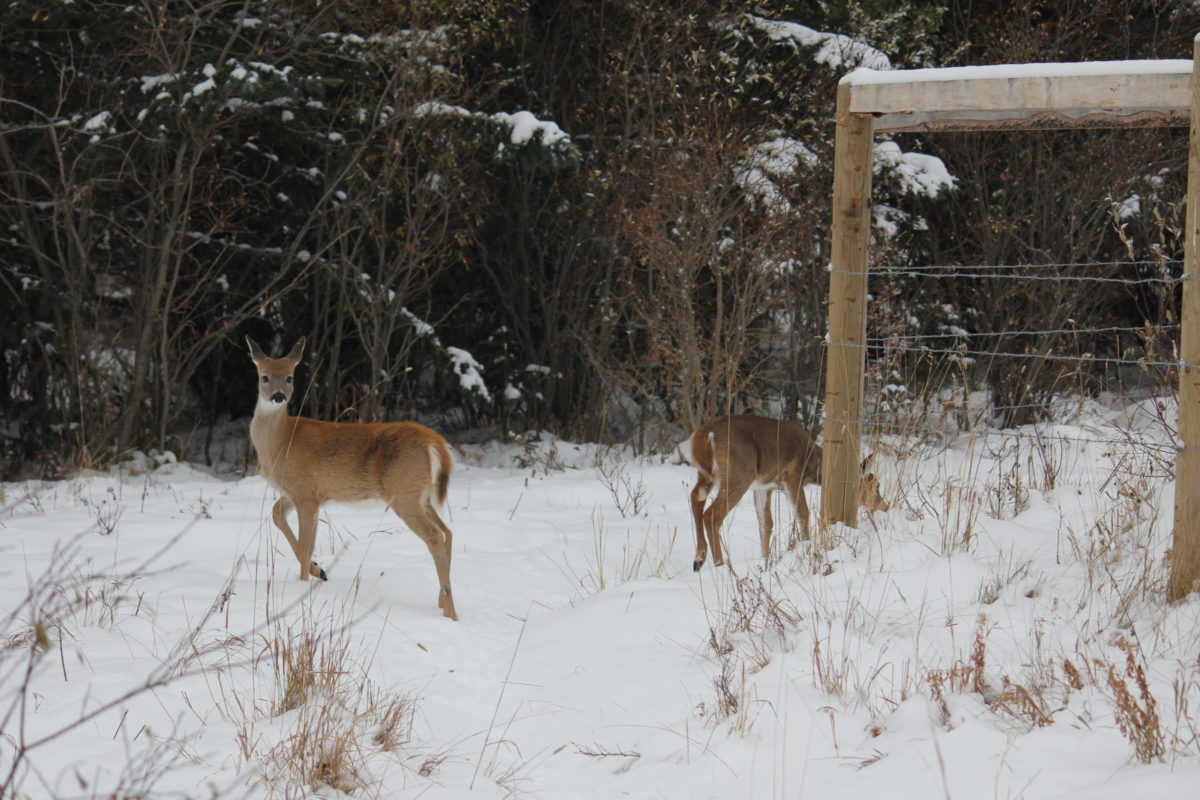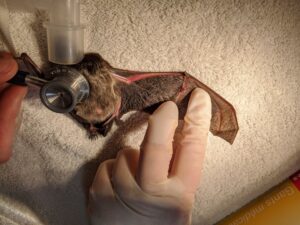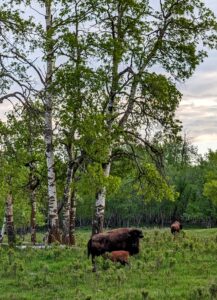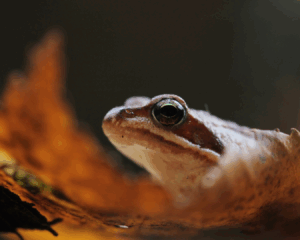By Andrea Stibrova
Though the days are now getting longer, there are still some months of winter ahead. Many birds have left the cold northern winds behind and migrated to warmer regions; you may have spotted Canada geese in the sky in their typical V shape, or flocks of ducks heading south. Some of our mammals, such as bears, ground squirrels, or nonmigratory bats store a sufficient amount of fat during the summer months.[1] This allows them to hibernate and spend the winter months inactive.
Other animals stay active during the winter and have different strategies to deal with the harsh, cold months. They grow thicker hair and feathers to keep them warm, and change their behaviour to preserve energy. Some animals can slow their metabolism so that they require less food, or even change their body temperature! No matter what their strategy is, winter is a challenge for all the wildlife here in Alberta. The freezing temperatures, arctic winds, scarce food sources, and frozen lakes and ground turn this time of the year into a battle to survive. Conserving energy becomes more important than ever, and wild animals need our help to ensure they make it through the winter.
Keeping your distance
The best way to help our wildlife get through this tough time is not to disturb it. Many of us are excited to hit the slopes and enjoy our favorite winter sports and activities, but we should be extra careful to avoid any disturbance of wildlife while enjoying the gorgeous Canadian winter.
For example, let’s look at large game animals such as elk, deer, or moose. Their winter food resources are limited, and in winter they will lose weight and become slightly weaker than in the summer. Any disturbance that spooks them requires the animal produce extra energy to get away, which can use up their already small stores of energy.[2]
It can be hard to avoid a surprise wildlife encounter during winter sports, but there are ways! You can make sure to keep wildlife encounters to a minimum by sticking to designated areas and trails. Animals know areas with increased human activities, and generally avoid these places. However, many people participate in backcountry spots, where an unexpected wildlife encounter is more likely to occur. If you do encounter wildlife during backcountry skiing, cross-country skiing, or other activity, be sure to keep your distance (at least 100m is advisable for most species), and leave the area as calmly as possible to avoid startling the animal.
Keeping dogs on leash
Humans are not the only winter disturbance that our wildlife has to watch out for. Many people bring their dogs outside with them to enjoy the whether and get some exercise; however, our dog companions can’t fight their instincts and will often give chase if they spot a wild animal! Fleeing to safety again will cause animals to deplete their already small energy stores, so we should always keep our dog on a leash while hiking, with our dogs in parks or in wild nature to prevent them from stressing the wild animals we love to see there.
Motorized vehicles
The biggest winter disruptions to wildlife are motorized over-snow vehicles, such as snowmobiles. The noise of the machine causes the animals to panic, and fleeing from the seemingly dangerous situation causes them to use a lot of energy. Increased motorized activity in wild lands can also change the natural landscape, creating pathways where predators can gain easier access into formerly safe forests. In addition, the noise coming from snowmobiles or humans in the backcountry areas is not only disturbing to ungulates, but predators like wolves or wolverines may be affected as well. Even hibernating bears can be disturbed if there is too much activity; waking up early and leaving the den can be dangerous for them, and even more so if they are with cubs that are left alone in the den.[3]
Stay on track
Whether you are enjoying the winter wonderland in the snowmobile, skiing, or on foot, we help the wildlife by staying on trails and tracks. This reduces disturbing larger animals but also protects smaller mammals, such as mice and shrews, living under the snow. They live in what is called the subnivean zone, in between the ground and the layer of snow. The snow protects the animals from predators and harsh weather and serves as insulation, keeping them warm. By moving outside of trails and tracks, our feet or skis put pressure on the snow which can accidentally affect the insulating layer of snow where these animals live.[4]
By keeping your distance, having your dogs on leash, and using designated areas and trails for your winter activities, you can help your local wildlife survive and thrive during these tough winter months!
References
[1] Bondrup-Nielsen, S., & Austin-Smith, P. (2015, March 5). Animals in Winter. Retrieved from https://www.thecanadianencyclopedia.ca/en/article/animals-in-winter
[2] Avoid Disturbing Wildlife During Winter Months. (2017, January 03). Retrieved from http://pagosasprings.com/avoid-disturbing-wildlife-during-winter-months/
[3] Environmental Impacts from Snowmobile Use. Retrieved from https://winterwildlands.org/wp-content/uploads/2014/05/Environmental-Impacts-from-Snowmobile-Use.pdf
[4] Environmental Impacts from Snowmobile Use. Retrieved from https://winterwildlands.org/wp-content/uploads/2014/05/Environmental-Impacts-from-Snowmobile-Use.pdf






